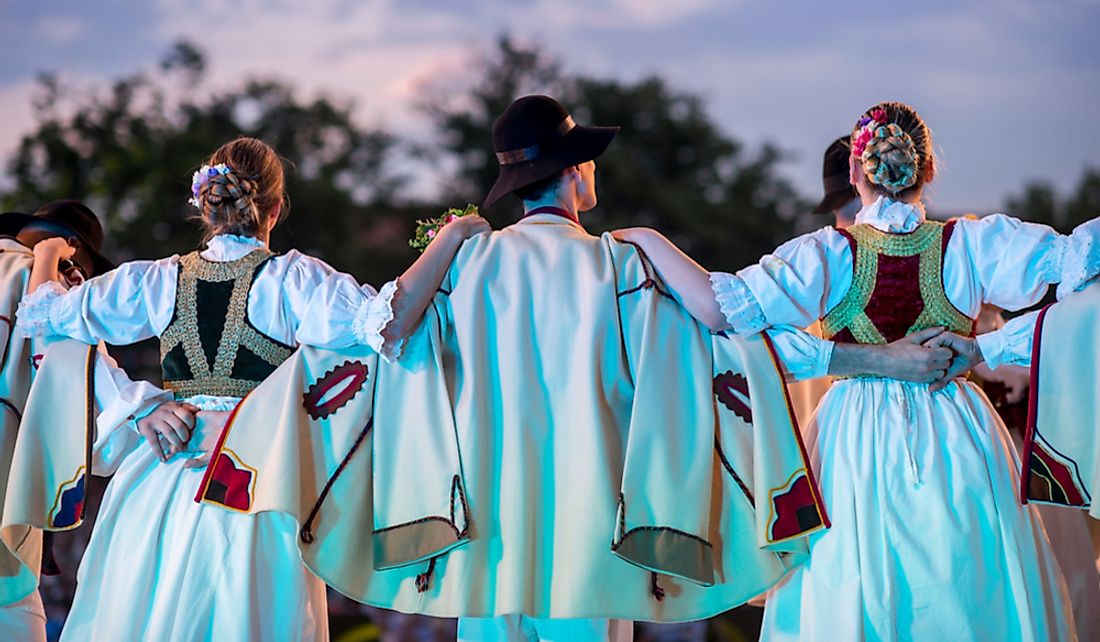The Slovak People - Cultures of the World

The term "Slovak people" refers to the West Slavic ethnic community native to Slovakia, and they share a similar history, culture, ancestry, and speak the Slovak language. Out of the 5.4 million people in Slovakia, about 4.4 million are ethnic Slovaks. Slovak ethnic groups are also found in Poland, Hungary, Serbia, Croatia, and the Czech Republic. There are also Slovaks in diasporas in the United States, the United Kingdom, and Canada. Slovaks have played a significant role in European history including in politics, culture, science, military, and religion. The Slovak people have lived in central Europe from the Middle Ages. They were a minority group in Hungary, and later in the Austro-Hungary Empire beginning in the 7th century until the time when Czechoslovakia was formed by the treaty of Versailles in 1918.
4. History
The origin of the Slovaks can be traced to the Slavic people who are believed to have migrated from the European-Asian frontier to the region lying between the Carpathians and the Danube in around the 5th and 6th centuries. They were skilled agricultural people, and they established permanent occupations in the Ipel, Morava, Vah, Torysa, and Nitra river valleys. This settlement correlates with the historical and contemporary geographical distribution of the Slovak people.The settlements along the Nitra Valley became the earliest focal point of political significance, and it became home most of the western Slovak rulers. The first Christian church to be established in east-central Europe was built in Nitra.
3. Architecture
The Slovak settlements throughout history have been made up of a single room where all activities were carried out such as food preparation, sleeping, and other social and economic activities. Over time, more rooms were added particularly for entertainment and sleeping. Furniture of long narrow benches was incorporated for sitting and sleeping.The arrival of the German colonizers had a huge impact in the architecture, particularly in the mining regions. Later when the Hungarian Kingdom was occupied by the Turks in the 16th and 17th centuries most of the Hungarians sought refuge in Slovakia, which also influenced the architecture of the Slovaks. On the other hand, the eastern region of the country was the meeting point between the two greatest civilizations in the world, the Byzantine and the Roman cultures. The two cultures are reflected in the architecture of distinctive wooden Orthodox and the Roman Catholic churches, known as the pearls of eastern Slovakia.
2. Cuisine
Slovak cuisine varies extensively depending on the region, but it is mostly based on stewed and boiled vegetables, soups, smoked meat, stewed fruit, gruels, roasted meats, and dairy dishes.The most common of the Slovak dishes include sheep cheese and small dumplings, bryndzové halušky. In the rural and peasant homes, five meals are taken in a day with the first one in the morning (raňajky), a snack at around 10 am (desiata), a meal at noon (obed), a snack at around 4 pm (olovrant), and the evening meal (večera). Tea is also a popular beverage, and other common drinks include, wine, beer, and juices. Popular distilled beverage include gin (borovička) and plum brandy (slivovica).
1. Cultural Significance
Before the second half of the 20th century, most jobs in the society were held by men except for nursing, but there have been changes, and women now are found in managerial, engineering, and administrative roles among others. Men in the society still hold privileged positions both at home and in the outside world. The Slovaks typically practice monogamy and all individuals in the society are expected to marry except for the disabled. However, in the modern Slovak society individuals have other choices like remaining single or living with a partner. To this day parents in many instances receive a cash bonus when a child is born. Divorce has now become common as well as remarriage.











